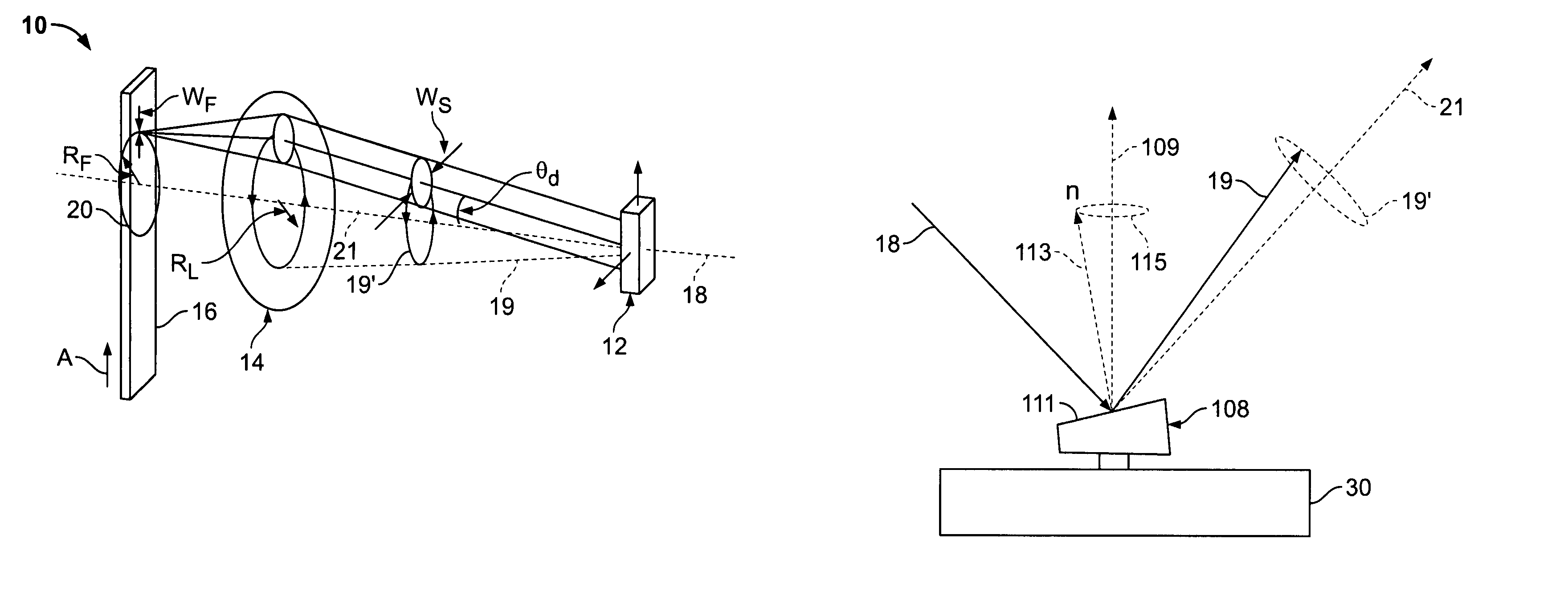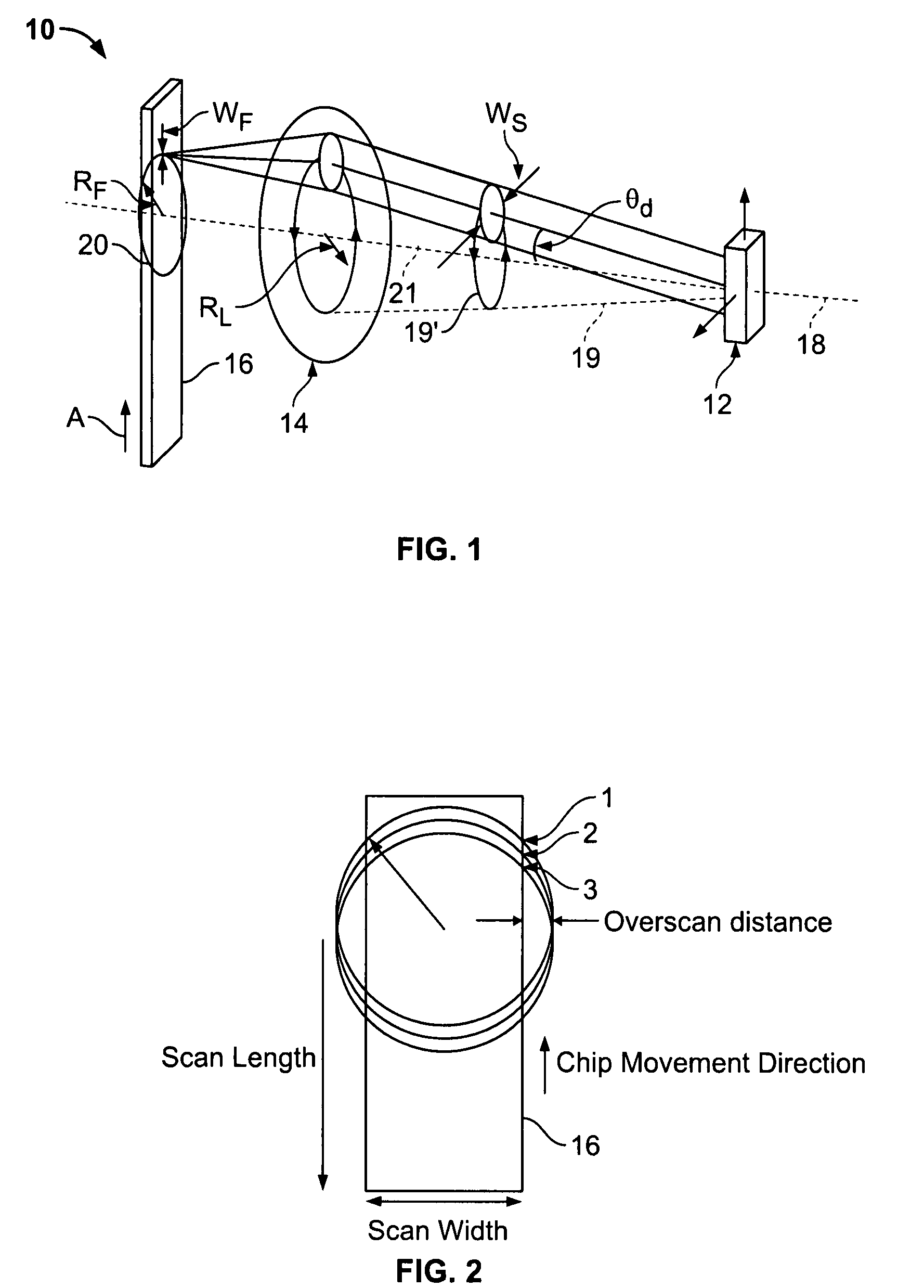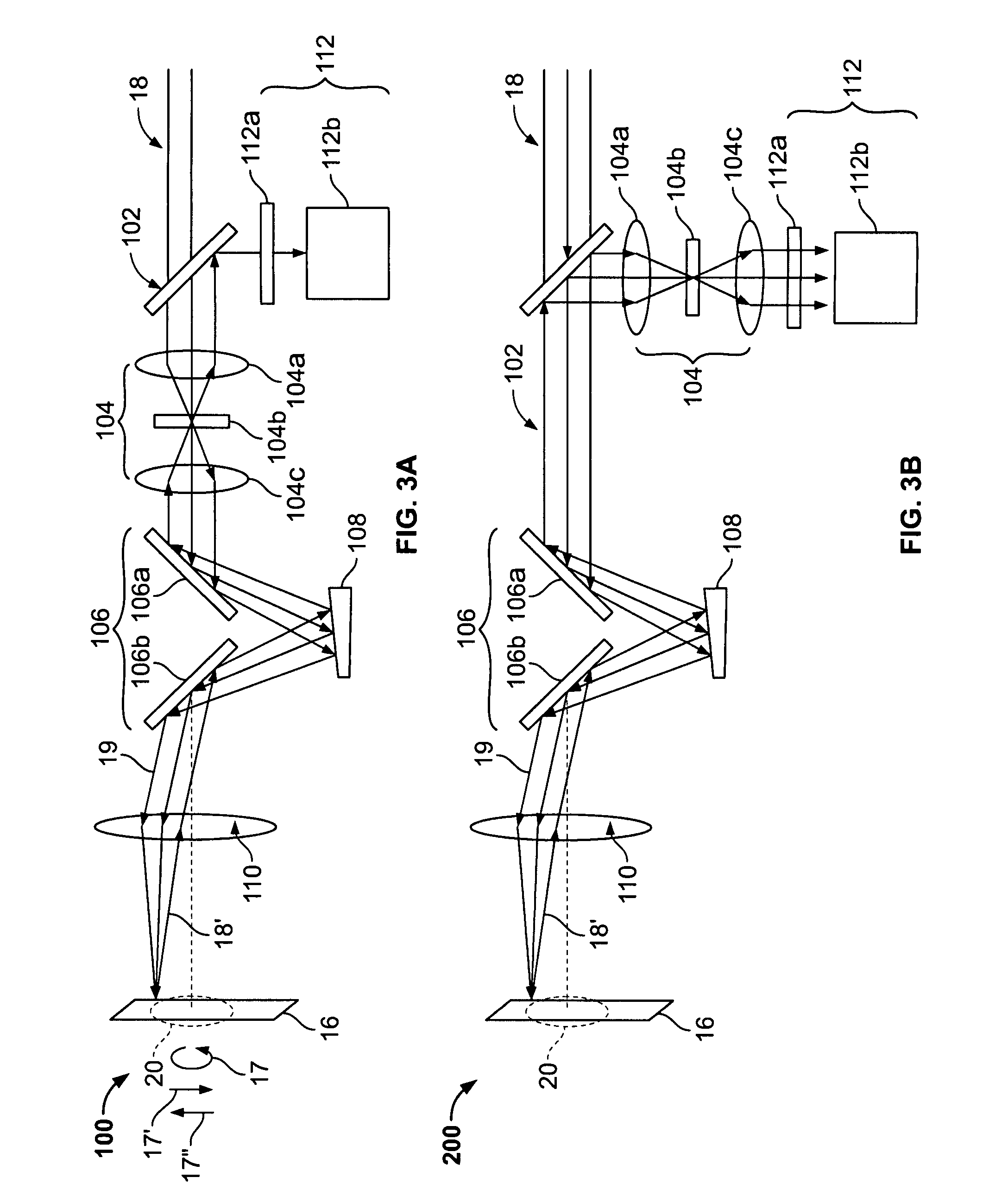Optical scanner with improved scan time
a scanning time and optical scanner technology, applied in the field of high scanning frequency methods and equipment, can solve the problems of limiting the rate at which objects are scanned, limitations of conventional optical scanning systems, and limitations of focused beam movement rate, etc., to achieve simple and less expensive objectives
- Summary
- Abstract
- Description
- Claims
- Application Information
AI Technical Summary
Benefits of technology
Problems solved by technology
Method used
Image
Examples
Embodiment Construction
[0027]FIG. 1 shows an embodiment of the present invention in the form of an optomechanical system generally indicated as 10 for rapidly scanning a 2-dimensional plane with successive circles (see FIG. 2). The optomechanical system 10 includes a conical scan generator 12 and an objective lens 14 arranged in a desired relation to an object (substrate) 16. Relative movement is provided between the object 16 and the optomechanical system 10, such as by moving the object 16 in the direction of the arrow A.
[0028]In operation, the conical scan generator 12 responds to an incident beam of light (such as a laser beam) generally indicated as 18, and directs a scanned laser beam generally indicated as 19 (also referred to as an exit laser beam) on the objective lens 14 in a desired pattern. The exit laser beam 19 scans around the objective lens 14 at a fixed radius RL with a fixed input angle θd. When scanned in this manner, the exit laser beam 19 moves along a conical direction before impingi...
PUM
 Login to View More
Login to View More Abstract
Description
Claims
Application Information
 Login to View More
Login to View More - R&D
- Intellectual Property
- Life Sciences
- Materials
- Tech Scout
- Unparalleled Data Quality
- Higher Quality Content
- 60% Fewer Hallucinations
Browse by: Latest US Patents, China's latest patents, Technical Efficacy Thesaurus, Application Domain, Technology Topic, Popular Technical Reports.
© 2025 PatSnap. All rights reserved.Legal|Privacy policy|Modern Slavery Act Transparency Statement|Sitemap|About US| Contact US: help@patsnap.com



